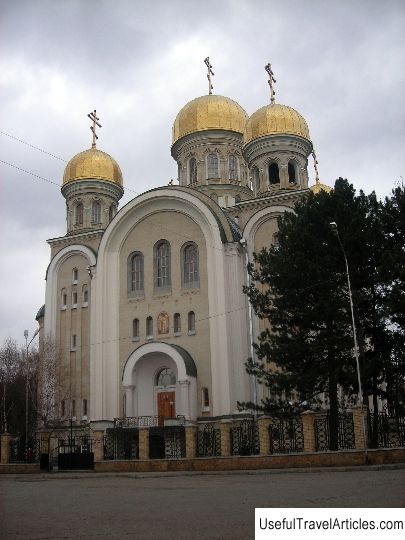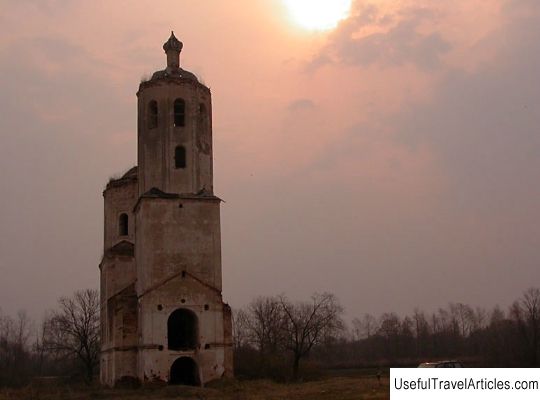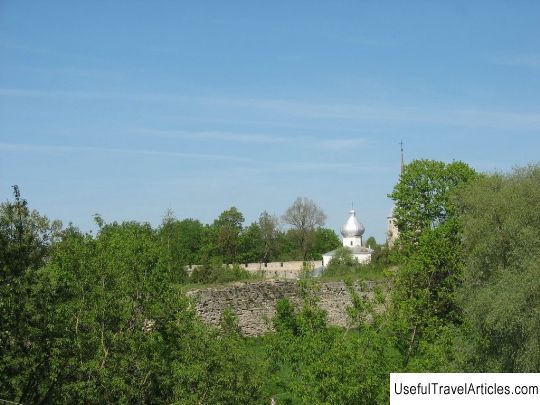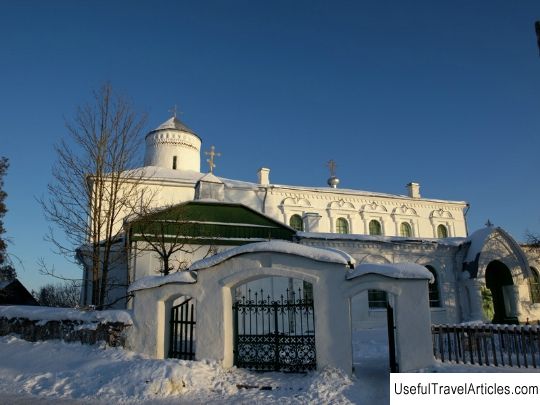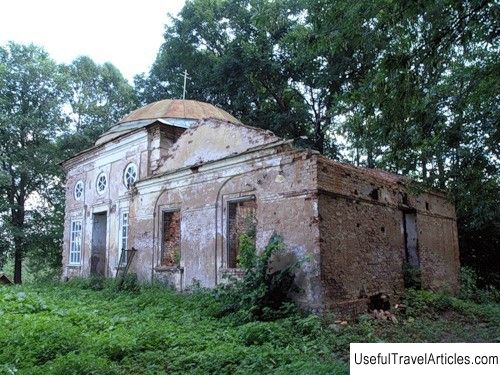Church of St. Nicholas the Wonderworker in Videlebye description and photos - Russia - North-West: Pskov region
Rating: 8,0/10 (600 votes) 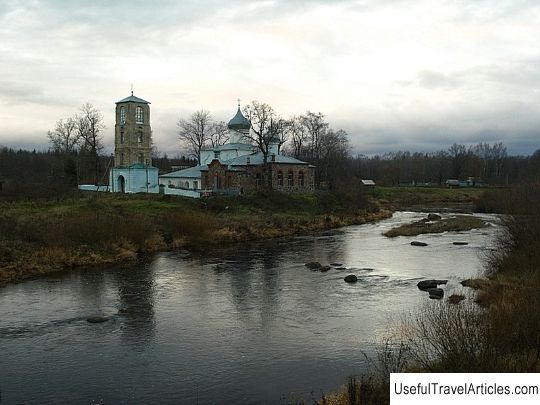
Church of St. Nicholas the Wonderworker in Videlebye description and photos - Russia - North-West: Pskov region. Detailed information about the attraction. Description, photos and a map showing the nearest significant objects. Photo and descriptionVidelebie is the birthplace of St. Euphrosynus, who became the founder of the Spaso-Eleazarovsky monastery. The Church of St. Nicholas the Wonderworker is located between the village of Podsevy and the village of Karamyshevo, along the road in the direction of Pskov-Porkhov, and stands on the low right bank of the Cherekha River, on a small graveyard surrounded on all sides by a fence. The church is a four-pillar, cross-domed, three-apse temple. The main cube volume is equipped with semi-cylindrical lowered apses in the direction from the east, and is also crowned with a cylindrical light drum with a bulbous head. From the western part there is a small vestibule, and from the north - a side-side lowered church with a semicircular apse, as well as a decorative wooden octahedral drum, which is elegantly crowned with an octahedral head; on the south side there is a large side-chapel, which was completed quite late. In the western part of the church, namely 8 m from it, there is a pillar-shaped bell tower. The front design of the quadrangle is made in the traditional design and has a three-part division, made with the help of blades, which are connected in the upper part by creeping two-blade arches, in the central part of which there are sections of the roof, under which the cornice is drawn. The church roof is hipped and built in place of the previously existing multi-pitched roof. The temple light drum has four slotted window openings, which are located on all cardinal points, and in the upper part of them is decorated with a belt made of semicircular stepped niches with green glazed tiles, under which there is a ceramic belt with an inscription, made with ligature in the 16th century. On the eastern side of the facade of the quadrangle, a small niche has been preserved, and on the western and northern sides, only their upper parts, since the lower ones disappeared during the expansion of the windows, made with arched lintels. The quadruple has a bulbous dome, equipped with a metal cross and covered with roofing iron. There are four pillars in the interior design of the quadrangle. The light drum is located on the supporting raised arches. The cross sleeves are covered with a box vault. In the western side of the quadrangle there are choirs, in the northern and southern parts of which there are tents. In the southern tent there is a side-chapel in honor of Euphrosynus and Nikandr, and in the eastern wall of the tent there is a deacon, a priest and a throne. On the north side of the quadrangle there is a side-by-side temple in honor of the Intercession of the Mother of God, equipped with a semicircular apse, a narthex and a decorative octahedral drum made of wood, ending in the form of a metal head and a cross. A thin profiled cornice runs directly under the pitched roof. The windows have a bulbous shape and are decorated in the form of profiled frame platbands. The side church has a flat ceiling. There is one window opening on the wall facing north. The Kazan side-altar has a pentahedral apse, and the window openings are closed with metal bars. Above the central part is a decorative drum, ending with an iron-covered dome. Literally eight meters west of the church, there is a four-tiered bell tower, built during the years 1827-1837 in the provincial belated baroque style. The window openings of the middle and upper tiers are equipped with frame platbands and keystones. The bell tower was built from a limestone slab, then plastered and whitewashed. As for the old interior decoration, which was quite rich at that time, only a four-tiered prefabricated iconostasis dating back to the middle of the 19th century has survived at the church. The iconostasis is laid out in the form of a solid wall and ends with several pear-shaped icons equipped with wooden crosses. The iconostasis is equipped with clearly defined vertical and horizontal articulations, and is also decorated with carvings, which are mostly located on the Royal Doors. During the 1960s, many icons from the St. Nicholas Church were taken for storage to the Pskov Museum, the most valuable of which were: "The Ascension of the Mother of God", "Protection of the Mother of God" and "Venerable Euphrosynus and Nikandr".     We also recommend reading Big Hole kimberlite pipe description and photos - South Africa: Kimberley Topic: Church of St. Nicholas the Wonderworker in Videlebye description and photos - Russia - North-West: Pskov region. |
